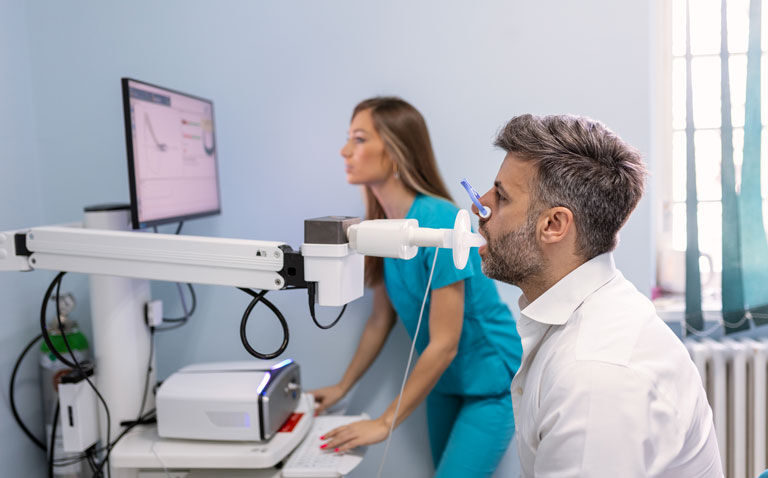Diagnostic spirometry is increasingly used to confirm the presence of chronic obstructive pulmonary disease (COPD) but there are still existing barriers to more widespread use, according to a recent analysis.
Published in the journal NPJ Primary Care Respiratory Medicine, Swedish researchers examined whether the proportion of patients with diagnostic spirometry had increased over time. The team originally explored spirometry use in 2005 but re-assessed the level of use following the introduction of national guidelines in 2014. In the current study, they also set out to determine any factors associated with omitted or incorrectly interpreted spirometry.
Using data from medical reviews and a questionnaire from primary and secondary care patients diagnosed with COPD between 2004 and 2010, the researchers compared the findings from a cohort diagnosed between 2000 and 2003.
Changes in use of diagnostic spirometry
Among 703 patients with a COPD diagnosis between 2004 and 2010, 88% of these had diagnostic spirometry, compared with 59% (p < 0.001) in the previous cohort. Furthermore, the correct interpretation of spirometry results also increased between the two periods (75% vs 82%; p = 0.010).
In further analysis, it became clear that factors associated with not having diagnostic spirometry were: current smoking (Odds ratio, OR = 2.21, 95% CI 1.36 – 3.60), low educational level (OR = 1.81, 1.09 – 3.02) and being managed in primary care (OR = 2.28, 95% CI 1.02 – 5.14). The authors speculated that the lower use of spirometry in current smokers was largely because physicians probably felt the diagnosis was more likely and hence did not require confirmation.
While greater use of diagnostic spirometry was encouraging, the authors suggested that there was still a need for continuous medical educational activities to increase diagnostic accuracy.
Spirometry in context
The use of diagnostic spirometry has been advocated as a means to identify COPD in those with airflow obstruction and respiratory symptoms. However, spirometry is under-used in practice, with a real-world study finding that data from the technique was only used in 43.5% of nearly 60,000 COPD patients.
In fact, not using diagnostic spirometry potentially means that patients could be either under- or over-diagnosed with the condition. For example, it has been suggested that approximately 70% of COPD worldwide may be under-diagnosed and 30-60% of patients over-diagnosed.
An inadequate assessment with diagnostic spirometry has important implications for patient management. For example, a late COPD diagnosis, can result in a higher exacerbation rate, increased comorbidities and costs compared with an early diagnosis.










